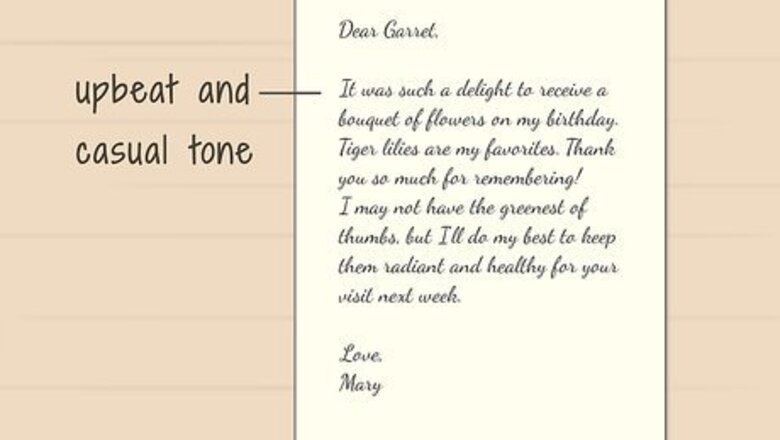
views
Writing the Message
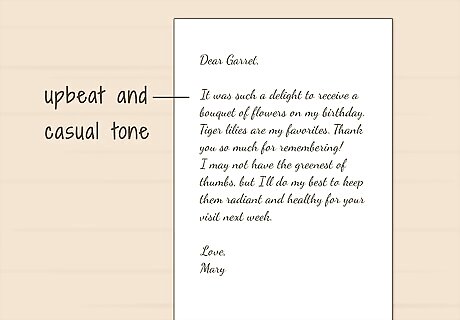
Modify your tone to fit the occasion and your relationship to the recipient. A thank you note is one great and heartfelt way to express your gratitude, but you must choose appropriate words to match the occasion for the flowers and your relationship to the other person. Did a significant other send you flowers? A friend or relative? Was it your birthday, graduation, or an anniversary of something special? For a significant other, your tone might be more affectionate. For instance, you might use a nickname like “babe” or “honey.” For a birthday or graduation, you might keep the tone upbeat, focusing on how excited you are to start a new chapter. For more somber occasions, like the anniversary of a death, tailor your tone to be more sentimental.
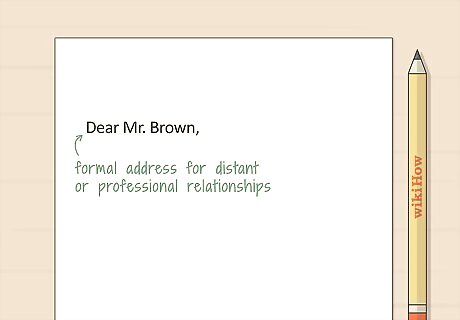
Use a formal address for distant or professional relationships. If the person is a professional acquaintance or someone you’ve only met a few times, you might use their proper name like “Dear Mr. Brown,” or “Dear Patsy Pleasanton.” If the flowers were sent from a family or group of people, make sure to address it to the group. For instance, to address a formal group, you might write: “Dear Edna, Ali, and Johannes McLeod,” or “Dear my lovely Phi-Kappa sisters.”
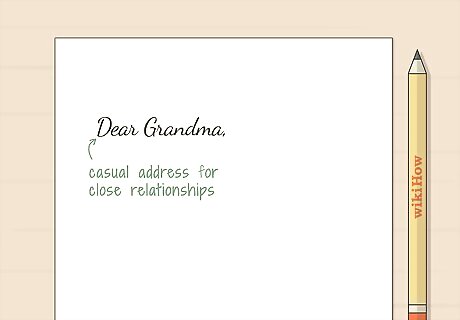
Write a casual address for close relationships. If you’re thanking a friend or relative, start off with “Dear (their name)” or just their name followed by a comma. With a significant other, you could amp it up with “Dearest (their name)” or stick to “Dear (their name)”—whatever feels right to you! Feel free to use proper pronouns or nicknames to address family members. For instance, “Dear Grandma” or “Dear Auntie B.” If you're not really familiar with the person, stick to "Mr." or "Ms." followed by their last name.
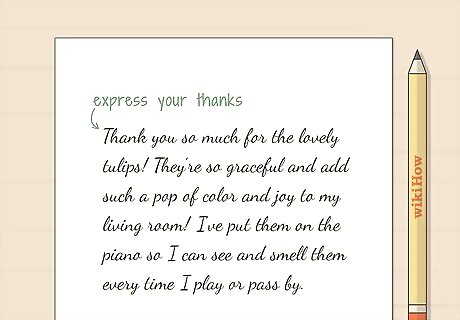
Express your thanks for the flowers. Jump right in and thank them for being so thoughtful. Feel free to gush about how lovely the flowers are, mentioning where you’ve placed them, how great they smell, and how much you enjoy them. For example, you could write, “Thank you so much for the lovely tulips! They’re so graceful and add such a pop of color and joy to my living room! I’ve put them on the piano so I can see and smell them every time I play or pass by.” Make sure to use your creativity when describing the flowers — or the person itself! — in a unique way, using words like fabulous, appreciated, generous, considerate and sweet.
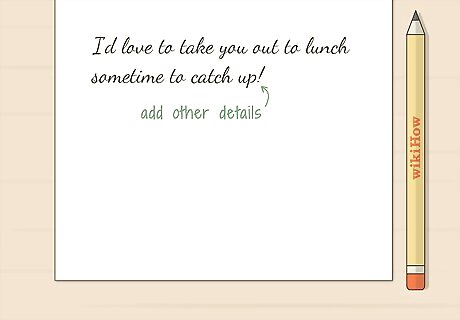
Add any other details you want to include. Share anything else you’d like in your message—just keep it short and sweet. You might ask them to meet you for lunch soon or let them know how much you miss seeing them. Write from the heart and make sure your letter sounds like you wrote it (i.e., avoid using a tone that’s stiff or sounds like someone forced you to write it). For instance, you could add: “I’d love to take you out to lunch sometime to catch up!” or “I miss seeing you and can’t wait for our beach trip in December!”
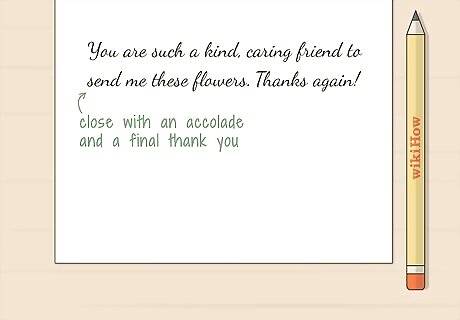
Close the body of your message with an accolade and a final thank you. Let them know how sweet they are for sending you the bouquet before ending with a final expression of gratitude. Paying them a compliment or giving them praise will let them know that you admire who they are and that you appreciate having them in your life. For instance, “You are such a kind, caring friend to send me these flowers. Thanks again!” or “I really appreciate your thoughtfulness. Again, thank you so much for the flowers!”
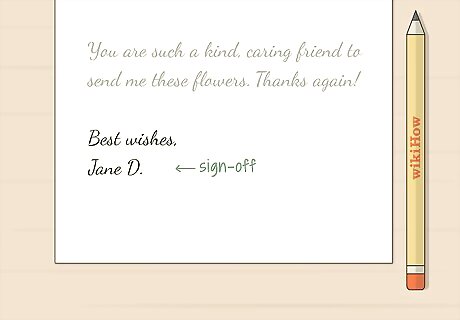
End with an appropriate sign-off and your name. Finish your letter by writing “Sincerely,” “Love,” “Hugs and kisses,” “Take care,” or something like that. Choose a salutation that matches the tone of your relationship with the recipient. For example, you might write “Best wishes,” to someone you’re not super close to and “Love and hugs,” to a best friend or close family member.
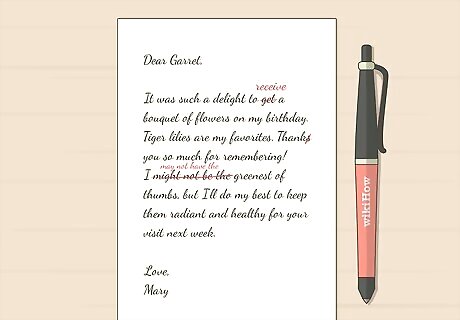
Proofread your message for errors or awkward language. Reread your letter after you’ve written it to check for spelling errors, proper grammar, and awkward wording. Don’t worry if you’ve messed up while writing in pen, you can always rewrite the message on a fresh card or, if you don’t have another card, use corrective fluid. Make sure you’ve spelled the recipient’s name correctly! It may help to read your message aloud to make sure it sounds authentic.
Sending the Card
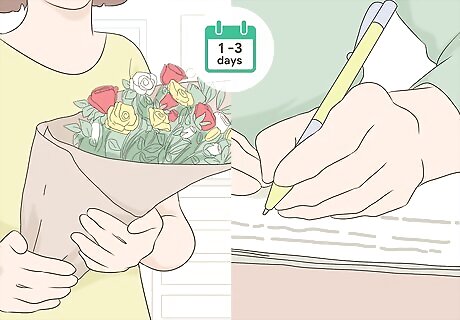
Write and send the card within 1 to 3 days after receiving the bouquet. Take the time to sit down and write the thank you letter as soon as you can after you receive the flowers. Then, address the envelope and place a stamp on it so it’s ready to go. Send it with other outgoing mail or drop it in your nearest postbox sometime that week (ideally a day or two later). Don’t stress if you don’t send it right away or even a week or two later. It’s generally acceptable to send it up to a month later but any time after that might be a little awkward (albeit still acceptable).
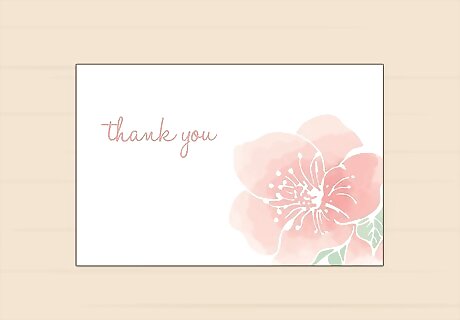
Decorate the outside of the envelope or include a picture if you like. Make your thank you note even more personal by decorating the outside of the envelope or inserting a picture of the bouquet they sent you. Keep the decor on the outside of the envelope away from the stamp as well as the return and recipient address lines so your letter doesn’t get returned to you. Place colorful stickers on the outside of the envelope or create your own designs with colored pencils or markers. Use stencils if you’re not confident about your free-hand drawing skills.
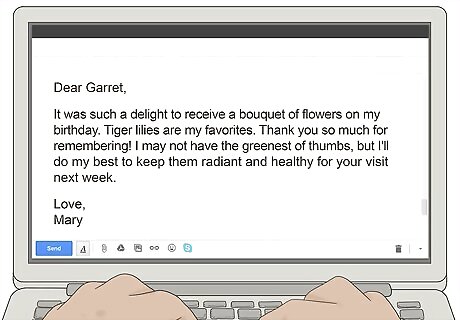
Mail it to the recipient or place it on their doorstep if you live nearby. Drop the letter into your nearest post box or take it to a post office to send it. If you live nearby, feel free to place it on their doorstep or in the wedge between their door and the door frame (just secure it from the wind, if necessary). Hand-delivering letters might seem tacky, but a hand-delivered note is better than no note at all. Odds are, the person will be delighted that you bothered to write them a note in the first place. Avoid putting it in their mailbox as mailboxes are considered federal property and should only contain items marked by a postage stamp.
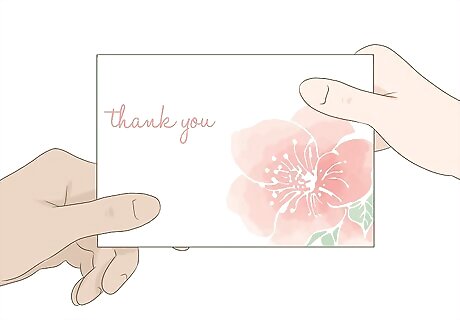
Give it to them the next time you see them. It’s not ideal to just hand it to them, but if you don’t want to use snail mail, giving it to them next time you’re together works just as well. If you want them to find it by surprise, slip it into their bag or notebook or place it somewhere they’ll stumble upon it. For instance, if you and the recipient hang out soon after you’ve received the bouquet, you could slip the card into their coat pocket, bag, or anywhere else where they’ll be sure to find it.

















Comments
0 comment